What can it hurt to talk to your plants? Maybe it does nothing for the plants, but it makes you a better, more observant, attentive and cheerful gardener
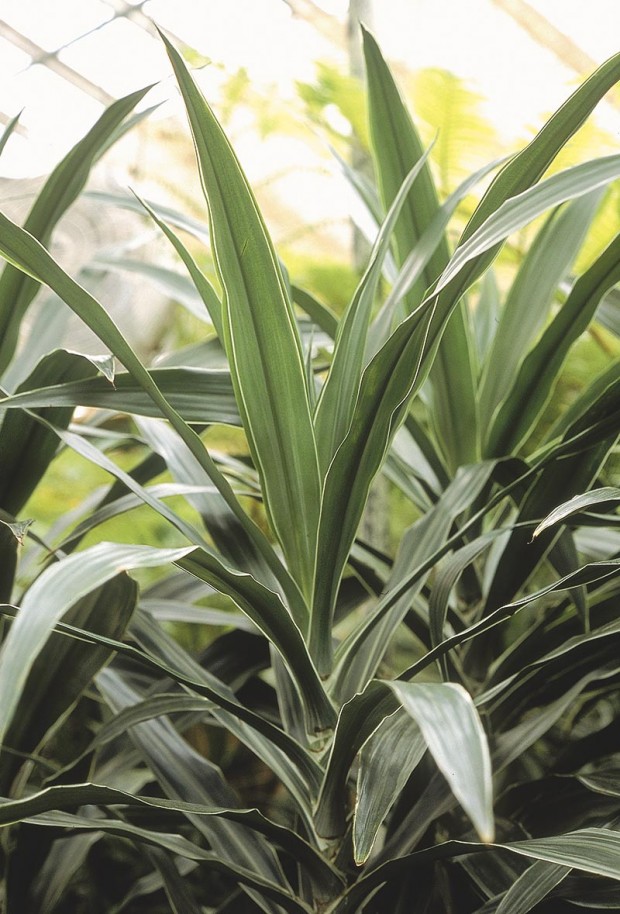
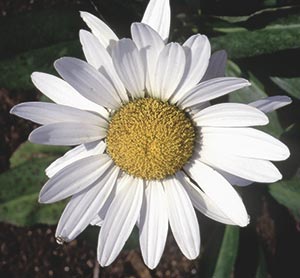
You’ve heard of whisperers. Most well-known are horse whisperers, people gifted in working with frightened, neglected, aggressive, hard-to-handle horses with behavioral problems. These healers came out of the woodwork when Robert Redford added his famous smile to the considerable mystique of horse whispering, yet one group is notably quiet. Plant whisperers remain in the shed, so to speak.
Why is there virtually no coverage in the press and no scientific attention to plant whisperers? When so many do it, when there are high-profile champions of the cause such as Prince Charles (‘Of course I speak to plants’), when slightly wacky lie detector expert Cleve Backster hooked his houseplants to a polygraph, and Alfred Hitchcock story collections featured men going mad once they could hear the voices of grass being cut and vegetables plucked? The conspiracy of silence stretches back even to 1848 when Dr. Gustav Theodor Fechner’s theory of emotive greenery, published in Soul-Life of Plants, sent only a short-lived riffle through the scientific community.
My goal is not an appeal for proof that plants hear us and respond. My point in amplifying the subject of plant whispering is to look at what it does for us, the whisperers. It’s irrelevant whether you believe the plants respond or not. What matters is that you see how good this practice is for those who do the talking.

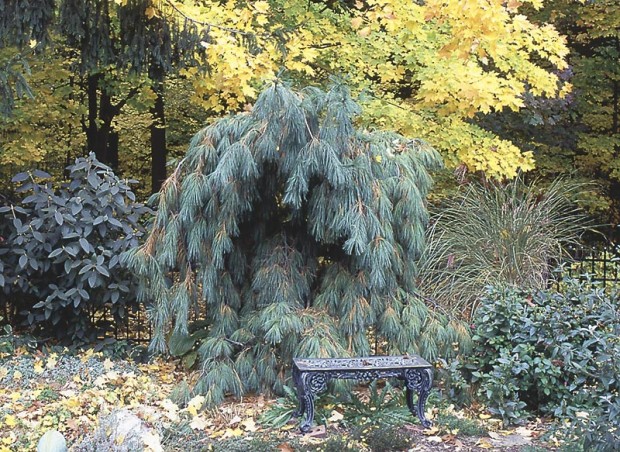
Better learning when we hear as well as see
People who study human learning claim that we remember significantly more of what we see and hear than we do of things we heard but didn’t see, or saw without accompanying sound. In that case, we are bound to learn more if we speak to a plant, reinforcing thought with sound.
In addition, researchers have proven that we retain a great deal more information when we move as we learn, matching muscle use to spoken word. Since few can speak to a plant without also stroking a leaf, straightening a stem or gesturing in some way, we are also scribing into our muscles what would otherwise be only a mental and aural memory.
So it makes sense that the gardener who stops to chat is more likely to remember which of his or her charges need water the most, which limbs need staking, or where the bugs hang out. It’s a good bet that person will remember the promises and observations made aloud and then act on that knowledge in ways that improve the garden.
I pay attention when I’m talking
Talking is also a means of focusing attention, and that’s a basic tenet of the whisperers’ craft. Buck Brannaman, famous horse whisperer and consultant on the movie of that name, tells his students to get the horse’s attention first, that if you don’t have that, it doesn’t matter what you do next.
In the case of plants, the benefit doesn’t come from capturing the plant’s attention. It comes when the plant wins your undivided attention.
In talking to a plant, I’m compelled to look for specifics to include in my dialogue. It’s not like the wordless, soothing crooning or repeated generalities like “It’ll be all right” that I might use with a nervous cat in a car. I’m talking to myself as much as to the plant so I’m more likely to be analytical in my plant whisperings. I look for something worthwhile to say, perhaps, “You’re looking greener today” or “How’re those tips, have we finally ousted those pesky mealybugs?” Even if I’m taking a hard line with a plant the conversation is going to focus on particulars, such as, “I warned you that we’d have to cut that branch if you don’t start adding a bit more leaf on the other side!” Because I decide to talk, I look more closely and attend to the details.
An old saying sums it up, “The best fertilizer is the farmer’s footprint.” Attention makes the world greener while lack of attention leads to garden failures. We all know that plants rarely fold up and die overnight, that there are usually early-stage symptoms that an observant person can use to make a diagnosis. It’s also pretty commonly accepted that ministrations in the initial phases of a plant’s decline tend to be more successful than last-ditch efforts applied to the near-dead. Yet ask anyone who works at a garden center about the story given by people who return dead plants, and you’ll hear that it is most often, “I don’t know. It was fine and then it just died.” Such terse individuals are probably not plant whisperers. They didn’t talk and by keeping their mouths closed they failed to open their eyes.
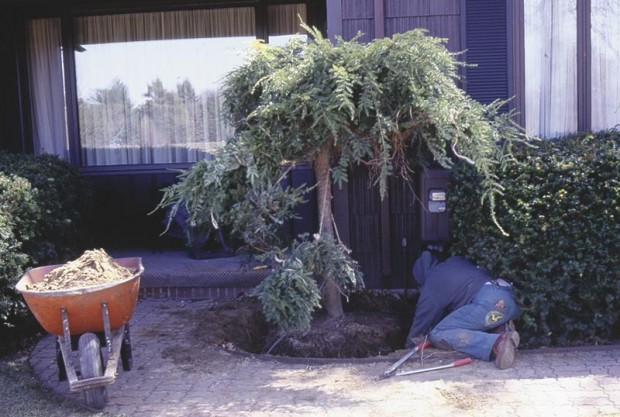
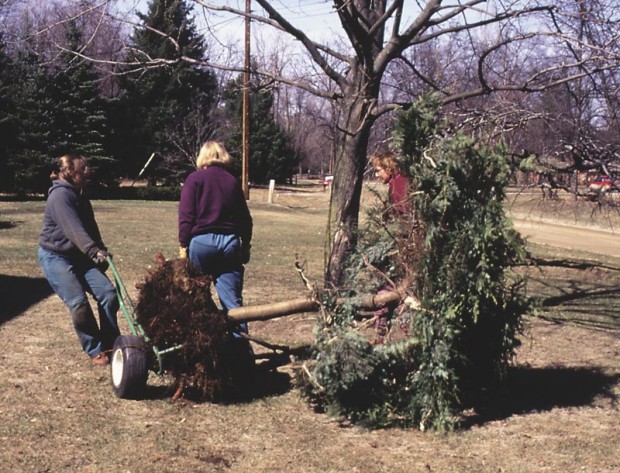
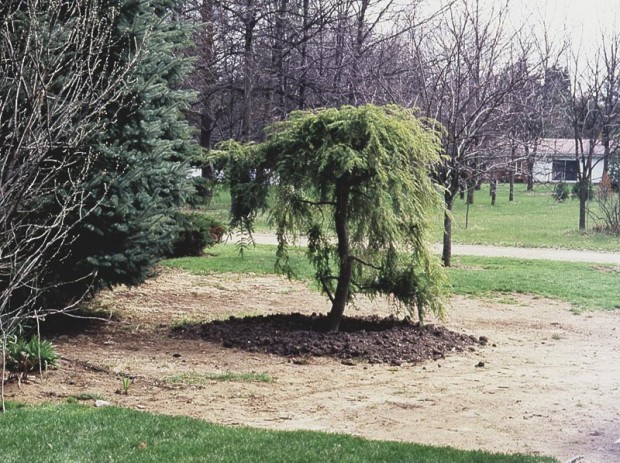
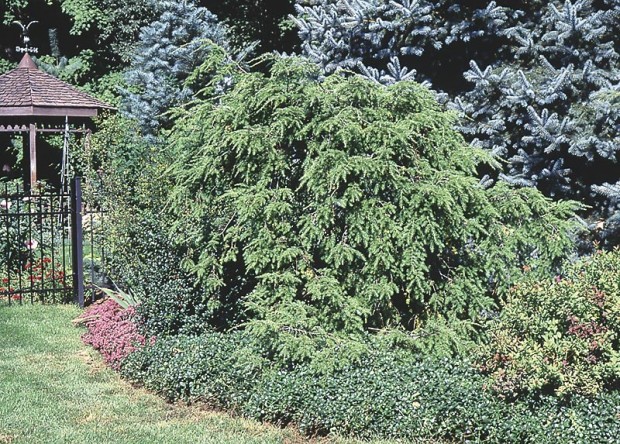
Synergy from involving others in the conversation
We capture the notice of others when we talk to plants. Not just the bemused neighbor or passerby but important others, people who have something to contribute but might not think to share information except that you piped up first.
As an example, take Pat the gardener and Pat’s handy, loving, but horticulturally-clueless spouse. Pat, leaning close over a small shrub and commiserating: “Oh, that’s not good. Here I thought you were all taken care of but that big old brute lilac is blocking the sprinkler from reaching here, isn’t it? I’ll just have to water you by hand until I can figure a way to move that sprinkler. Maybe you’d like a trickle irrigation line, wouldn’t that be good?”
Pat’s spouse, sitting unnoticed on the far side of the lilac on the patio, thinks: “Ah ha. That would be a perfect thing for a birthday present. I’ll have to ask Pat’s buddy Kim what the heck trickle irrigation is.”
It’s not just something that happens in the family. People of different disciplines do meet and take steps forward for the greater good when the thoughts of one are out there where both can examine them. Claus Mattheck was a mechanical engineer when something, perhaps one of those belt-wearing, saw-wielding plant whisperers known as arborists, made him take a look at trees as structures. Now Mattheck’s book “The Body Language of Trees,” is revolutionizing arboriculture by explaining specific signs that tell of impending breakage and fall.
Talk softly and carry a big smile
Maybe the biggest benefit to the whisperer comes from the quiet, calm nature of whispering. This low level of sound probably applies more naturally and consistently to a plantsperson’s work than to any other whisperers’ job. Animal whisperers embrace non-violent ways, but don’t you suspect that even the best of them has raised his or her voice to a subject, if only to be heard above the crashing of hooves against a stall or baying at an imagined threat? That kind of racket just doesn’t happen with plants. Even when we’re upset with a plant so that we feel it needs rebuke, we don’t stand back, stamp our foot and holler. We practice reason or at least learn to accept events with grace, two strategies that become routine and thus are there as a natural fall-back attitude in stressful non-garden situations.
Are you laughing at yourself or a plant whisperer you know? That’s another benefit of this practice. Who hasn’t pulled up in spring an item they planted in fall, mistaking it for a weed? We recognize the error at sight of the potting mix on the root ball, or when we see that there are three of the supposed weed, regularly spaced in a triangle as weeds never are. Perhaps it’s good for the plant to hear “Oh you poor thing, I’m sorry!” but the grin at your own expense is worth far more.
Article by Janet Macunovich and photos by Steven Nikkila, www.gardenatoz.com.
